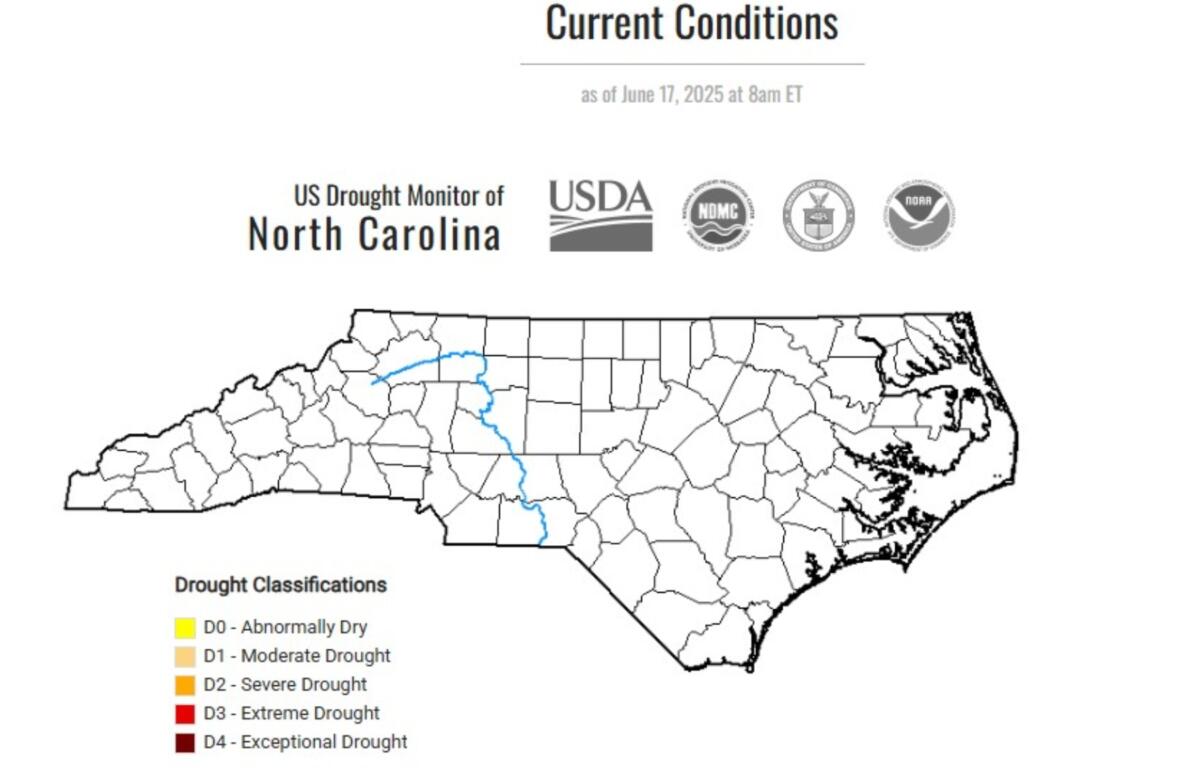ASHEVILLE, N.C. (828newsNOW) — North Carolina is officially drought-free for the first time since mid-October, according to the latest report from the North Carolina Drought Management Advisory Council.
The advisory, released Thursday, showed no areas of the state experiencing drought or even abnormally dry conditions, marking the end of a months-long stretch of below-normal rainfall that began last fall.
“Due to the drought’s timing in winter and spring, impacts were limited, since it occurred at a time when water demands are typically lower,” Klaus Albertin, chair of the DMAC, said in a news release. “Reservoir operators were able to control releases to keep water levels near target. There were some limited report impacts to agriculture. We did see an active wildfire season amid the drought and dry conditions.”
From October through mid-April, the state experienced widespread dryness, with the largest rainfall deficits recorded in the coastal plain. Wilmington saw nearly 15 inches less precipitation than average for that period, according to the North Carolina State Climate Office.
But heavy rains in recent weeks have helped reverse those deficits. A series of storms brought localized flooding and significant rainfall to eastern North Carolina, the news release said. Elizabeth City has already received 6.52 inches of rain this month, putting it on track for its wettest June on record. Greenville recorded 6.71 inches between June 15 and 16, marking its wettest two-day period since Hurricane Florence in 2018.
According to the National Weather Service, Asheville has recorded 22.26 inches of precipitation since Jan. 1 — 0.34 inches below normal.
“The dryness that began in October of 2024 began tapering off in March and regular, sometimes heavy, rain since then has brought streamflow, reservoir levels, and soil conditions back to normal,” Albertin said in the statement. “We shifted out of the La Niña pattern, which allowed regular cold fronts to come through, along with heavy rains.”
The DMAC is a multi-agency group led by the North Carolina Department of Environmental Quality’s Division of Water Resources. Members meet weekly to assess conditions and provide recommendations to federal partners, including the National Oceanic and Atmospheric Administration, the U.S. Department of Agriculture and the National Drought Mitigation Center.
Updates to the U.S. Drought Monitor are published each Thursday, based on data through the previous Tuesday.


